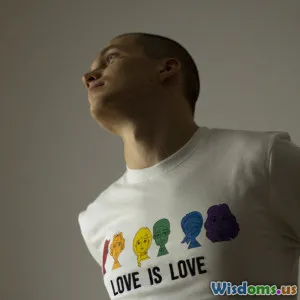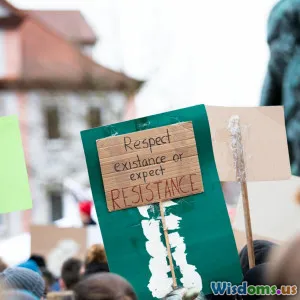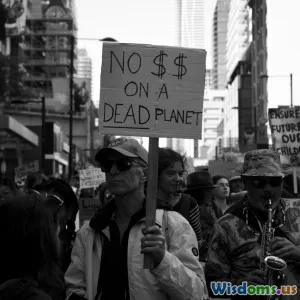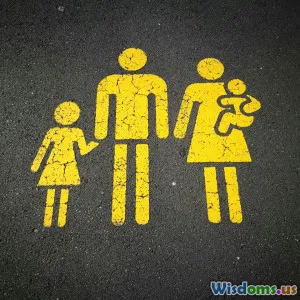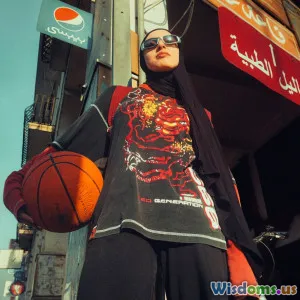
Fashion as Cultural Resistance How Streetwear Became a Movement
8 min read Explore how streetwear evolved into a powerful cultural resistance movement reshaping fashion and identity. (0 Reviews)
Fashion as Cultural Resistance: How Streetwear Became a Movement
Fashion isn’t just about aesthetics—it’s a powerful language of identity and resistance. Over the past few decades, streetwear has risen beyond a style trend, embodying cultural resistance that challenges social norms, economic exclusion, and mainstream fashion narratives. This article delves deep into the evolution of streetwear, its foundations in marginalized communities, and how it became a global movement of expression and empowerment.
The Origins of Streetwear: Roots in the Margins
Streetwear’s genesis traces back to the 1970s and ’80s in major urban centers such as New York and Los Angeles. It emerged from the creative labs of skateboarders, hip-hop artists, and punk rockers—groups often sidelined by high fashion.
Skate Culture and DIY Innovation
Skateboarding culture, particularly on the West Coast, pioneered casual, functional clothing like loose jeans, graphic tees, and durable sneakers. Brands like Stüssy, founded by surfer Shawn Stüssy in the early 1980s, mixed surf aesthetics with DIY silkscreened T-shirts, signaling a rejection of traditional fashion hierarchy.
Hip-Hop’s Expression of Identity
Concurrently, the East Coast hip-hop scene gave birth to a powerful sartorial language. Icons like Run-DMC popularized Adidas sneakers, tracksuits, and bucket hats, signifying both street authenticity and resistance to assimilation into mainstream culture. The collaboration with Adidas on the 1986 track “My Adidas” highlighted the sneaker as a symbol of pride and cultural identity.
Punk’s Challenge to the Status Quo
Punk’s contribution cannot be overstated. The rebellion against commercialism and mainstream conformity spread globally, embracing DIY ethos which influenced the graphic statements, patches, and purposeful ‘imperfections’ found in streetwear.
Streetwear as a Form of Cultural Resistance
What elevates streetwear from fashion trend to cultural movement is its role as a subtle yet potent vehicle for resistance.
Defying Fashion Elitism
By embracing casual, accessible clothing over couture’s exclusivity, streetwear challenged the elitist, often exclusionary fashion industry. This democratization allowed marginalized voices and identities to occupy space in public culture, shifting power dynamics.
Communicating Political and Social Messages
Streetwear often incorporates bold graphics, logos, and slogans that reference socio-political issues. For example, the 2017 Supreme x Undercover collaboration included designs featuring provocative symbols critiquing capitalism and consumer culture. The rise of Black-owned streetwear brands during movements like Black Lives Matter also emphasizes apparel as a medium of social activism.
A Platform for Cultural Identity
Fashion in streetwear explicitly celebrates cultural roots—whether through patterns that reference indigenous or African art, or styles born from immigrant communities blending global influences. Brands like Off-White by Virgil Abloh exemplify how streetwear incorporates both high-fashion and cultural narratives from the African Diaspora.
Key Moments and Influencers in Streetwear’s Rise
Several turning points and influential figures have propelled streetwear into global prominence.
The Explosion of Supreme
Founded in 1994 in NYC, Supreme capitalized on limited releases, exclusivity, and collaborations—transforming streetwear into coveted collector’s items. Supreme was groundbreaking in merging skate culture with high art and fashion, collaborating with Louis Vuitton in 2017—an event symbolic of streetwear’s ascendancy.
Virgil Abloh and the Mainstreaming of Streetwear
Virgil Abloh, founder of Off-White and former Louis Vuitton menswear artistic director, redefined luxury fashion with streetwear aesthetics. His approach legitimized streetwear as a mode of artistic and cultural expression in elite circles, while maintaining the movement's roots in resistance and identity.
Social Media and Digital Communities
Platforms such as Instagram and TikTok amplified streetwear’s global reach, enabling designers, influencers, and consumers to share narratives and styles unhindered by geographic or socio-economic constraints. The viral success of brands like Palace and A Bathing Ape (BAPE) owes much to these digital cultures.
The Global Impact: Streetwear Beyond Borders
Streetwear’s impact ripples globally, transcending its West Coast and East Coast origins.
Asian Streetwear Innovation
Japan’s BAPE merged Japanese pop culture, hip-hop, and skateboarding to create a unique streetwear aesthetic that influenced international markets. Similarly, South Korea’s streetwear scene blends K-pop influence and activism, challenging conservative societal paradigms.
European Reinterpretations
European cities repurposed streetwear to engage with local subcultures—London’s grime scene elevated brands like Palace, while Parisian designers infused haute couture with streetwear’s rebellious elements.
Economic and Cultural Empowerment
Streetwear has offered economic opportunities for entrepreneurs from marginalized communities worldwide, turning cultural heritage and resistance into viable, lucrative careers and fostering cultural pride.
Conclusion: Streetwear as an Ever-Evolving Movement
Streetwear stands at the intersection of fashion, social activism, and cultural identity. Originating in marginalized communities as a form of rebellion against prevailing norms and institutional barriers, it rapidly evolved into a global movement that champions diversity, inclusivity, and political expression.
Today, streetwear continues to challenge cultural and industry conventions, proving that fashion is not just what we wear, but how we assert our humanity. For individuals and communities seeking visibility and voice, streetwear is much more than clothing—it is cultural resistance in fabric and form.
Actionable Reflection: Next time you choose your outfit, consider how your clothes communicate your values and identity. Embracing streetwear or any culturally significant style is a way to participate in a broader dialogue about society and resistance.
"Clothing is a language, and streetwear is the voice of those often unheard." — Unattributed
References & Further Reading
- "Supreme and the Rise of Streetwear" – Business of Fashion
- "Virgil Abloh: Reimagining Fashion" – Vogue Cover Story
- Chang, Jeff. Can't Stop Won't Stop: A History of the Hip-Hop Generation
- E-commerce reports: Streetwear market growth data, 2023
- Social media analysis: Instagram & TikTok streetwear trends, 2024
Rate the Post
User Reviews
Popular Posts













